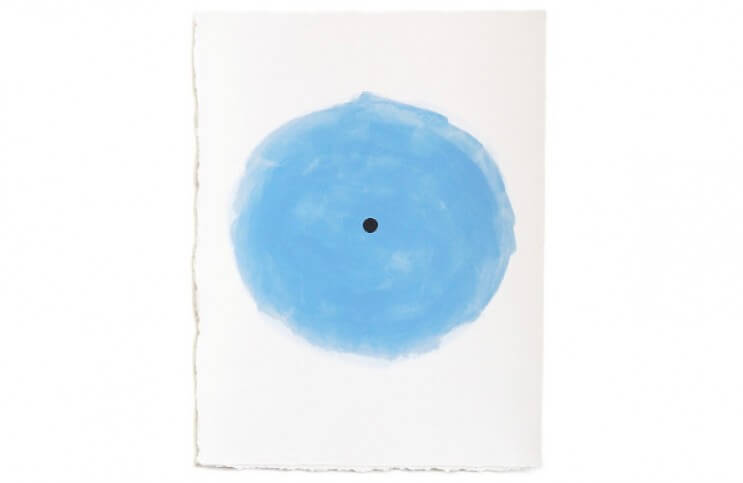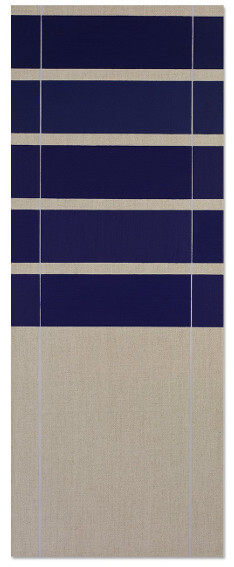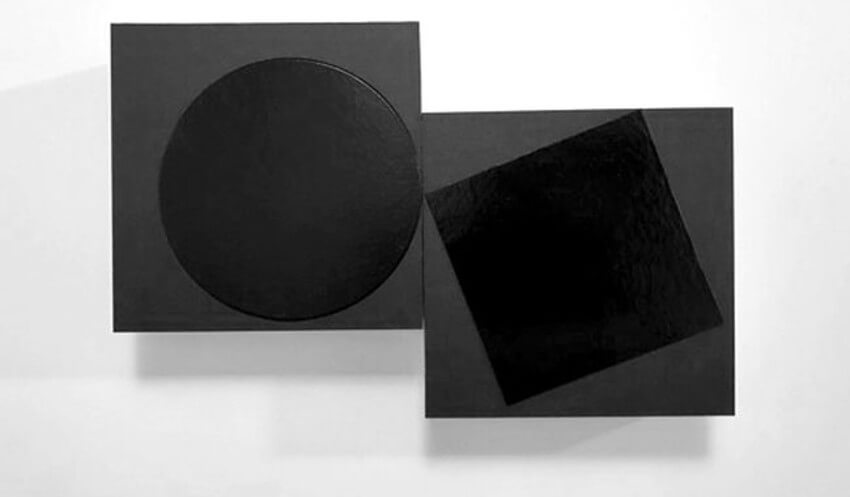
Female Artists in the Contemporary Reductive Art in an Exhibition in Kyiv
More than 100 years after it was painted, “Black Square” (1915), by Kasimir Malevich, remains one of the most influential works in the history of abstract reductive art. With this painting, as with all of his Suprematist works, Malevich was attempting to express a mystical visual language, one which he hoped would transcend the limitations of prior visual systems in order to convey something truly universal. Yet one of the odd side-effects of what Malevich accomplished is that the confidence and radicality of his hard-edged, geometric, abstract visual language somehow became associated with masculinity. Logic tells us that there is nothing gendered about art, and there is nothing universal about limiting an aesthetic position to one group or another. Nonetheless, over and over again writers, critics and educators have referred to reductive abstraction as a specifically male approach of art. But thankfully, we are starting to move beyond such outdated notions about gender and aesthetics. And a new exhibition in Kyiv, the city in which Malevich was born, is even going one step farther, completely overthrowing that legacy of masculinity that has so long been associated with Malevich and Suprematism. ICONS \ W13 brings 13 female contemporary abstract artists together who are working in the tradition of reductive abstraction. Each of the artists considers herself to be inspired by the legacy of Malevich, and each has developed a unique aesthetic position that in some way pushes Suprematist theory into refreshingly contemporary territory. Sponsored by Kyiv Non Objective (KNO) and held at the Mikhail Bulgakov Museum in Kyiv, the exhibition features thework of Jessica Snow (US), Jose Heerkens (NL), Linda Arts (NL), Wahida Azhari (DE), Louise Blyton (AU), Nina Smykalova (UA), Sarah Keighery (AU), Beverly Rautenberg (US), Suzan Shutan (US), Dombrovska Elena (UA), Li Trincere (US), Iemke van Dijk (NL), and Henriëtte Van 't Hoog(NL). And yet as many intriguing voices as this exhibition includes, it represents only a small percentage of the contemporary female abstract artists who have been influenced by Suprematism, which means it is also only the beginning of the deeper examination we need to conduct into the inherent gender neutrality of all types of art.
A Reductive Homecoming in Ukraine
The Ukraine into which Kazimir Malevich was born in 1879 was quite similar to the Ukraine of today. Malevich was one of 14 siblings, five of which died as children. Like most of his countrymen, he was a poor peasant who knew little about fine art. His homeland was torn by war and political strife, a condition which only worsened as the 20th century began. His ultimate quest to develop what he called a “pure, living art” was a direct reaction to the madness and chaos Malevich experienced in everyday life. It was an aspirational goal intended to transform Ukraine and the rest of the world. In his Suprematist manifesto, From Cubism and Futurism to Suprematism: The New Realism in Painting (1915), he started by saying, “I have transformed myself in the zero of form and dragged myself out of the rubbish-filled pool of Academic art,” and ended with the prophetic declaration, “tomorrow you will not recognize us.” For Malevich, Suprematism was an appeal to the future.

José Heerkens - L57. Light and Heavy, 2017. Oil on linen. 90 x 35 cm. © José Heerkens
Nonetheless, despite more than a century of effort and unimaginable technological and intellectual changes, Ukraine, just like the rest of the world, still struggles with war, poverty, and political strife. Perhaps it was naive for Malevich to believe that by simply changing the images people created and looked at he could change human nature. Then again, maybe we simply have not yet cracked the code. The choice to hold ICONS \ W13 in Kyiv is in many ways a revolutionary statement. It is a powerful pronouncement that the quest for universality that Malevich pioneered still has value. Each of the 13 artists in the show is proof that reductive abstraction will never be exhausted, as each has developed a way of exploring the concept of reductive abstraction in unique, and highly personal ways. Bringing these artists from around the world to the city where Malevich was born is a testament to the enduring value of his universal quest, and a reminder of just how far his ideas have spread.

Sarah Keighery - artwork, © Sarah Keighery
The Past is Present
In addition to the artworks included in ICONS \ W13, the curation also includes written essays by some of the artists. This idea is in keeping with the tradition of artist the as philosopher and educator, which is also essential to the heritage of Malevich. Among the essays for the show is Notes on Malevich: The Black Square, Black Holes, and the Mind’s Eye, by the San Francisco based artist Jessica Snow. The piece Snow contributed to the exhibition is titled “Black Hole 2” (2018). The title references “Black Square” while also bringing to mind the celestial phenomenon of an actual black hole. In her essay, Snow brings up the intriguing question of whether we are looking at the present or the past when we look through a telescope into deep space. If a black hole is strong enough to stop light and slow down time, is there really any such thing as the present or the past? Snow asks, “Are we in the past and the future at the same time?”

Beverly Rautenberg - artwork. © Beverly Rautenberg
That question is at the heart of what makes this exhibition so enticing. Whether it is the work of Jose Heerkens, whichbrings the exploration ofcolor, form, line and space into a deftly contemporary mindset; or that of Beverly Rautenberg, which brings formal geometric painting concerns into the realm of three-dimensional space; or the stunning and vibrant image objects Henriëtte Van 't Hoog creates,which combine Suprematist imagery with multi-dimensional optical tricks; or the work of any of the other ten visionaries in the show: each of these artists has found a way to connect contemporary aesthetic concerns with what is timeless about Suprematism, and ancient about reductive abstraction. These artists share in common the Suprematist desire to remind our eyes of the need to look more closely, and our minds of the need to think more deeply. And their presence together in this inspirational show is evidence that arbitrary separations like masculinity, femininity, and nationality are nothing compared to the aspirational promise of universality. ICONS \ W13 is on view through 20 June 2018 at the Mikhail Bulgakov Museum in Kyiv, Ukraine. It is curated by Billy Gruner (AU), and presented by KNO.
Featured image: Jessica Snow - Black Hole 2. Acrylic on paper. 14 x 11.3 in , 2018. © Jessica Snow
By Phillip Barcio






